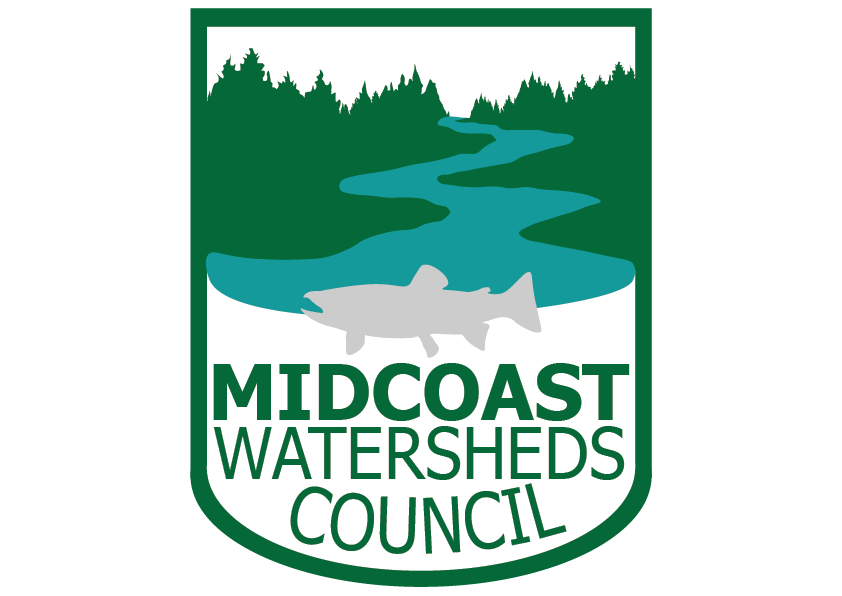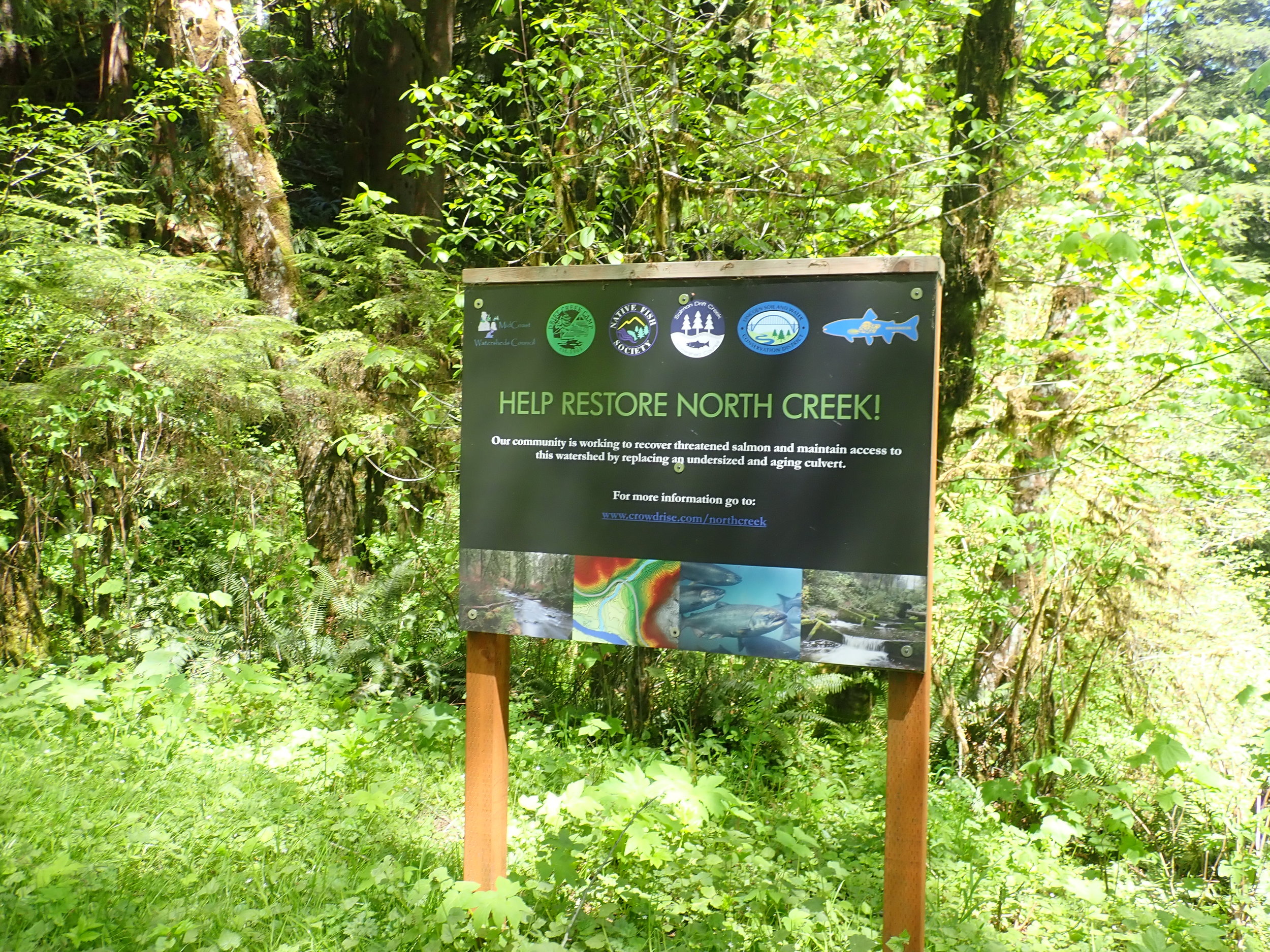Even during low summer flows, the old North Creek culvert was clearly undersized.
The ground has broken at a major culvert replacement project on North Creek, a tributary to Drift Creek in the Siletz River Basin, being managed by the MidCoast Watersheds Council, the US Forest Service, and other collaborators. In preparation for the heavy construction involved in removing the grossly undersized culvert, last week a total of 432 aquatic organisms—including rearing salmon—were removed to good habitat downstream so that dewatering of the work site could take place without harm. While rains at the end of June slowed down excavation work, the old culvert was successfully removed on June 28th.
Recolonization of North Creek by native fish will be easier than at other sites, as it is a direct tributary to Drift Creek, which already contains intact freshwater mussel beds and coho salmon rearing habitat.
Upon completion, this project will open up about 16 miles of high quality fish habitat in the Siuslaw National Forest by removing the current culvert and replacing it with an appropriately sized, open-bottomed structure. This coming fall, Chinook and coho salmon, along with steelhead, coastal cutthroat, lamprey, freshwater mussels, and other aquatic organisms will be able to freely access the habitats of North Creek for the first time in 62 years.
Before road construction in 1958, small boulders, cobble, gravel, and large woody debris settled near the mouth of North Creek during large storm events that brought the material down from its’ 4.4 square mile watershed,. This created excellent salmon spawning and rearing habitat, and a home for a genetically distinct population of Chinook salmon. However, construction of Forest Road 1790 resulted in a culvert less than half bank full width being placed 750 feet above the confluence of North Creek with Drift Creek. The Oregon Fish Commission quickly identified the North Creek culvert as a fish passage problem in 1961. Over the years, engineered fish passage improvement projects were attempted but all failed. Storm flows destroyed concrete lined pools below the culvert outlet in the early 1960's. Concrete weirs built in 1982 were unsuccessful even with modifications and the addition of boulders and large wood. As a result, high water velocity through the undersized culvert eroded stream cobble and gravel, leaving exposed bedrock. Adult Chinook salmon have not been seen in North Creek for decades, and environmental DNA analysis conducted by Trout Unlimited in 2018 detected no Pacific lamprey—an ESA listed species—above the culvert.
USFS Hydrologist Leah Tai stands next to the concrete weirs constructed below the undersized culvert, which are also set to be removed.
The entirety of the North Creek watershed was included in the designation of a late-successional reserve as part of the Northwest Forest Plan adoption in 1994. This means that the forest here is managed to enhance the development of old growth conditions, which in turn provide important watershed and aquatic habitat benefits. Restoration activities will greatly advance the ability for these benefits to be realized—especially in terms of the transportation of large woody debris into the creek previously prevented by the undersized culvert. Large woody debris in streams help to provide cover for juvenile fish, slow water to collect spawning gravels, and create deep pools that provide refuge for both juvenile and adult fish.
Following the culvert removal, other restoration activities will include the removal of the concrete weirs, installation of the new open-bottomed culvert, installation of natural boulders and cobble in the streambed, and seeding of native plants. During the remainder of this work, Forest Service Road 1790 will be closed to allow operation vehicles full access to the site. While this blocks access to Drift Creek Camp and other popular recreational areas, it is a short-term impact that will allow for long-term access of salmon and other aquatic organisms to high quality habitat. The road is currently set to reopen on August 31st, and visitors are welcome to check out the new changes at that time.
A sign was posted at North Creek prior to construction to inform visitors of the crowdfunding campaign.
Construction costs for this project total approximately $900,000, with support received via grants from the Oregon Watershed Enhancement Board, US Forest Service, US Fish and Wildlife Service, Oregon Department of Transportation-Oregon Department of Fish and Wildlife Fish Passage, Trout Unlimited, National Fish and Wildlife Foundation, as well as a crowdfunding campaign through the Native Fish Society.




